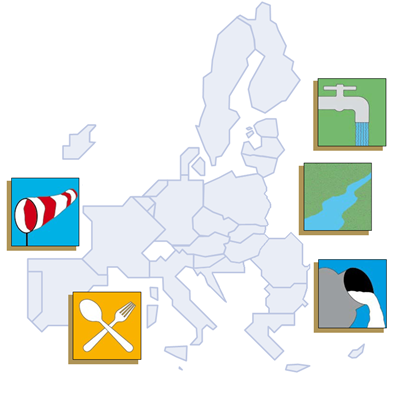REM database details
The Radioactivity Environmental Monitoring database (REMdb) was created in the aftermath of the Chernobyl accident (1986) by the European Commission (EC) – Directorate-General Joint Research Centre (DG JRC), located in Ispra, Italy. Since then it has been maintained there with the aim to keep a historical record of the Chernobyl accident and to store the radioactivity monitoring data gathered through the national environmental monitoring programmes of the Member States (MSs).

By collecting and checking this information in the REMdb, JRC supports the DG for Energy in its responsibilities to return qualified information to the MSs (competent authorities and general public) on the levels of radioactive contamination of the various compartments of the environment (air concentration, surface and drinking water, milk and mixed diet) on the European Union scale. The REMdb has been accepting data on radionuclide concentrations from European Union (EU) MSs in both environmental samples and foodstuffs from 1984 onwards. To date, the total number of data records stored in REMdb exceeds 5 million, in this way providing the scientific community, authorities and the general public with a valuable archive of environmental radioactivity topics in Europe.
Data description
All environmental radioactivity results are sent by the national contact points to the JRC and then introduced into the REMdb database.
Included in the database are the results of radionuclide measurements of both environmental samples and foodstuffs; best represented are air, deposition, water, milk, meat and vegetables. Alongside each measurement, information is stored about the location, sampling (when and how), analysis and source of the data.
Sample types
- Airborne particulates are measured due to their great radiological significance because they may be deposited and hence remain in the local environment.
- Surface water is one of the compartments into which authorised discharges of radioactive effluents from nuclear installations are made. Radionuclides in surface water can be found in the water phase or associated with suspended particles and can eventually become incorporated into sediments and living species.
- Drinking water is monitored because of its vital importance to human beings, even though a severe radioactive contamination of this medium is rather improbable.
- Consumption of milk and dairy products has been shown to be one of the most important pathways for uptake of radionuclides from environment to man.
- The aim of measuring radioactivity in mixed diet is to get 'integral' information on the uptake of radionuclides by human beings from the food chain.
It can be distinguished between two networks: dense and sparse. Dense network refers to a monitoring network that comprises sampling locations distributed throughout the member state’s territory and used by the Commission to compute regional averages for radioactivity levels in the community, sparse network groups those locations in which high-sensitivity measurements are performed.
Links to dataLinks to data
- Published data are on-line available to external users: https://data.jrc.ec.europa.eu/collection/id-0117
- Compilations of the information received are published by the Commission as monitoring reports.
More information on the monitoring reports can be found here.




